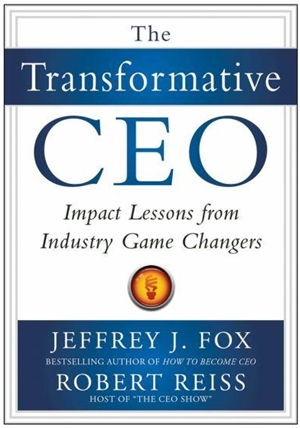Decisions, decisions – how good at them are you?
Decisions – either by you, your coworker, your boss, your family members, or your customer – drive your success, your lifestyle, and your attitude.
As you’re contemplating what to do, or how to decide, there are stream-of-conscious thoughts that affect the final choice and the resulting outcome. Whether you’re buying something, working on a project, parenting, or making a sale, there are decisions you have to make that will determine the outcome. Your job is to make the best one, the right one.
Most people think decisions are made based on economics. The price. Most people are wrong. Decisions are made based on a myriad of elements, and price is only one of them. Perceived value is way more of a factor than price.
The majority of decisions you make are based on existing emotion and perception, combined with previous experience – UNLESS you’re in politics, or corporate politics.
Those (political) decisions are made based on what’s popular, what’s likely to be approved, what’s safe (nobody ever got fired for buying IBM), or what’s politically expedient – and almost NEVER based on what’s best for the whole of the country or the company.
If you’re willing to think deeper about the decision making process for yourself, it may help you understand how others make their decisions. Especially if you’re in sales and your income and career are based on the decisions of others. The easiest way to understand the situation and other people is to first understand yourself, and how you make decisions.
Regardless of the decision at hand – yes, no, put off, act, buy, don’t buy, date, or reject – the questions below will help your conscious and sub-conscious mind understand your decision making process AND help you understand the decision making process of others.
Here are some of the thoughts that enter your mind AS you make choices:
- What’s the circumstance?
- What’s the reason?
- What’s the motive?
- What’s the risk?
- What are the potential consequences?
- What are my fears?
- What’s the reward?
- What’s the real issue?
- What’s the real barrier?
- What’s the money?
- What’s the perceived value?
- What’s the measurable value?
- What’s the social value?
- What’s the objective?
- What is my desired result?
- What am I hoping for?
- What is the outcome likely to be?
- What if it isn’t?
- Who gets hurt?
- Who benefits?
- What are the elements?
- What has been my past experience?
- What is my experience-based knowledge?
- Should I counsel anyone?
- Do I have to decide now?
- Is this temporary or permanent?
- Do I trust the other person?
- What’s the deadline or the urgency?
- What is my gut telling me?
Keep in mind all decisions involve some sort of risk. Risk involves and creates fear. The greater the risk, the more measured, deliberate, and collaborative the process. It’s always a judgment call, and fear often interferes with sound judgment.
IMPORTANT NOTE: The decision to buy is made emotionally, and then justified logically. You make the decision, and then defend it – sometimes to a fault.
The words ‘no brainer’ have always bothered me in the decision-making process. When someone says, “It’s a no brainer” to me, I become alarmed. What they’re saying is, “Don’t think about it, just do it.” Not good. All decisions are ‘brainers.’
To help you on the positive side of ‘decide,’ ask yourself:
- Am I doing what’s best for myself, or my company?
- Am I taking the high road?
- Am I choosing the best value?
- Am I at peace with myself?
On the negative side of ‘decide,’ ask yourself:
- Am I making an excuse to do it, even though I doubt the validity of it?
- Am I justifying it before the facts are gathered?
- Am I justifying it after the fact, and I knew it was a mistake?
- Am I procrastinating?
- Am I saying, “It’s the lesser of two evils?”
- Am I only getting buy-in before the fact to mitigate blame?
NOTE WELL: Fear of loss is greater than desire to gain. Fear of being wrong is more powerful than risk of being right. SIDE NOTE: Leaders emerge as they become fearless.
As you’re trying to get others to decide on you and your product or service, keep top of mind how you make your decisions. The better you understand yourself, the more powerful you’ll be at ‘getting a favorable decision.’
If you’d like the list of thoughts that enter into the decision making process, and a list of why people DON’T decide, go to www.gitomer.com, register if you’re a first-time visitor, and enter the word DECISION in the GitBit box.
Reprinted with permission from Jeffrey H. Gitomer and Buy Gitomer.
About the Author


 All choices require the decision-maker to deal with a degree of uncertainty and ambiguity. Many times the information needed to make the highest quality decision simply does not exist, is unavailable to the decision-maker, or cannot be identified within the decision’s needed timeframe. Consequently, these information gaps are filled with assumptions – the best educated guesses of the decision-maker and his or her team – in order to allow the decision-making process to move forward. These assumptions necessarily contribute to the uncertainty surrounding the decision and therefore must be treated carefully.
All choices require the decision-maker to deal with a degree of uncertainty and ambiguity. Many times the information needed to make the highest quality decision simply does not exist, is unavailable to the decision-maker, or cannot be identified within the decision’s needed timeframe. Consequently, these information gaps are filled with assumptions – the best educated guesses of the decision-maker and his or her team – in order to allow the decision-making process to move forward. These assumptions necessarily contribute to the uncertainty surrounding the decision and therefore must be treated carefully. Decision-making always possesses an element of uncertainty. And as the complexity of a decision increases, so does the risk of miscommunication, execution error, unanticipated conditions, and unintended consequences. StrategyDriven encourages the employment of a devil’s advocate to help mitigate such risks. (See StrategyDriven‘s best practice article –
Decision-making always possesses an element of uncertainty. And as the complexity of a decision increases, so does the risk of miscommunication, execution error, unanticipated conditions, and unintended consequences. StrategyDriven encourages the employment of a devil’s advocate to help mitigate such risks. (See StrategyDriven‘s best practice article –  Decisions put individuals and organizations at risk. Leaders feel compelled to make some decisions while others appear to be optional. Regardless of necessity, decision-makers should seek to identify the worst possible outcomes a choice can bring to enable mitigation preparation or to seize upon the opportunity.
Decisions put individuals and organizations at risk. Leaders feel compelled to make some decisions while others appear to be optional. Regardless of necessity, decision-makers should seek to identify the worst possible outcomes a choice can bring to enable mitigation preparation or to seize upon the opportunity. The Transformative CEO: Impact Lessons from Industry Game Changes
The Transformative CEO: Impact Lessons from Industry Game Changes